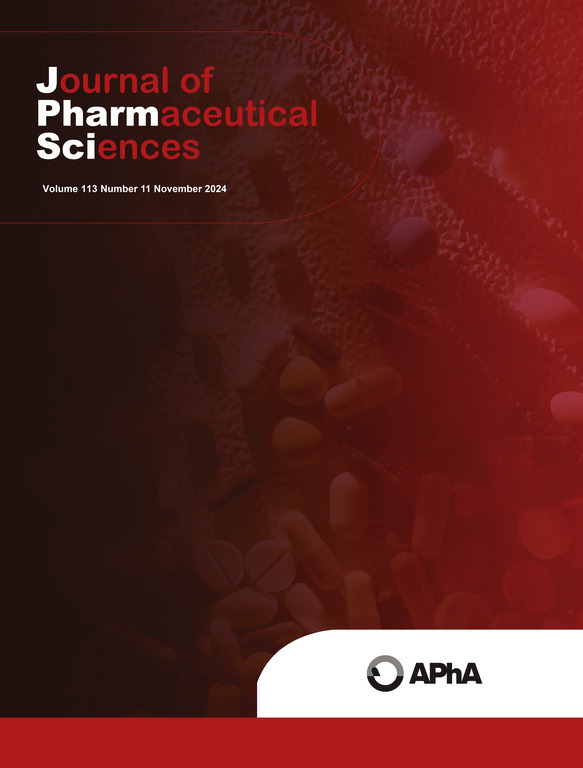Obtaining heat transfer coefficients (Kv) distribution directly from mass flow measurements during the sublimation step of freeze-drying
IF 3.7
3区 医学
Q2 CHEMISTRY, MEDICINAL
引用次数: 0
Abstract
The knowledge of heat transfer coefficients (Kv) and their distribution is a crucial element in the successful transfer of a freeze-drying process to a new piece of equipment. Nevertheless, the implementation of the classical ice sublimation method is resource consuming, particularly in the industrial context, which represents a significant barrier to its application. This paper demonstrates that the Kv distribution can be calculated from the measurement of mass flow during a freeze-drying operation by reversing the results of process simulation calculations. This methodology works independently of the experimental method used to measure the mass flux: tunable diode laser absorption, inlet/outlet temperature difference of the shelves, or chamber/ condenser pressure difference. The advantage of this new method is that it requires no specific experimental effort and can be carried out on routine production runs (especially with the temperature or pressure difference methods), provided the freeze drier possesses at least shelf inlet/outlet temperature measurement and/or chamber and condenser capacitance pressure measurement. Furthermore, the measurement encompasses all vials, which is not achievable using the conventional method for commercial units that contain tens of thousands of vials. Once fed back into the primary drying mechanistic model, the Kv distribution is used to estimate the temperature distribution in the product.
In this article, we provide practical examples at all scales, from laboratory to industrial production.
直接从冷冻干燥升华过程的质量流量测量中获得传热系数(Kv)的分布。
了解传热系数(Kv)及其分布是成功将冷冻干燥过程转移到新设备上的关键因素。然而,经典冰升华法的实施是消耗资源的,特别是在工业环境中,这是其应用的一个重大障碍。本文通过对过程模拟计算结果的反求,证明了通过对冷冻干燥过程中质量流量的测量,可以计算出Kv分布。该方法独立于用于测量质量通量的实验方法:可调谐二极管激光吸收,货架的入口/出口温差,或腔室/冷凝器压力差。这种新方法的优点是,它不需要特别的实验努力,可以在常规生产运行中进行(特别是使用温度或压差方法),只要冷冻干燥机至少具有货架入口/出口温度测量和/或腔室和冷凝器电容压力测量。此外,测量包括所有的小瓶,这是无法实现使用传统方法的商业单位,包含数以万计的小瓶。一旦反馈到初级干燥机理模型中,Kv分布用于估计产品中的温度分布。在本文中,我们提供了从实验室到工业生产的各种规模的实际示例。
本文章由计算机程序翻译,如有差异,请以英文原文为准。
求助全文
约1分钟内获得全文
求助全文
来源期刊
CiteScore
7.30
自引率
13.20%
发文量
367
审稿时长
33 days
期刊介绍:
The Journal of Pharmaceutical Sciences will publish original research papers, original research notes, invited topical reviews (including Minireviews), and editorial commentary and news. The area of focus shall be concepts in basic pharmaceutical science and such topics as chemical processing of pharmaceuticals, including crystallization, lyophilization, chemical stability of drugs, pharmacokinetics, biopharmaceutics, pharmacodynamics, pro-drug developments, metabolic disposition of bioactive agents, dosage form design, protein-peptide chemistry and biotechnology specifically as these relate to pharmaceutical technology, and targeted drug delivery.

 求助内容:
求助内容: 应助结果提醒方式:
应助结果提醒方式:


